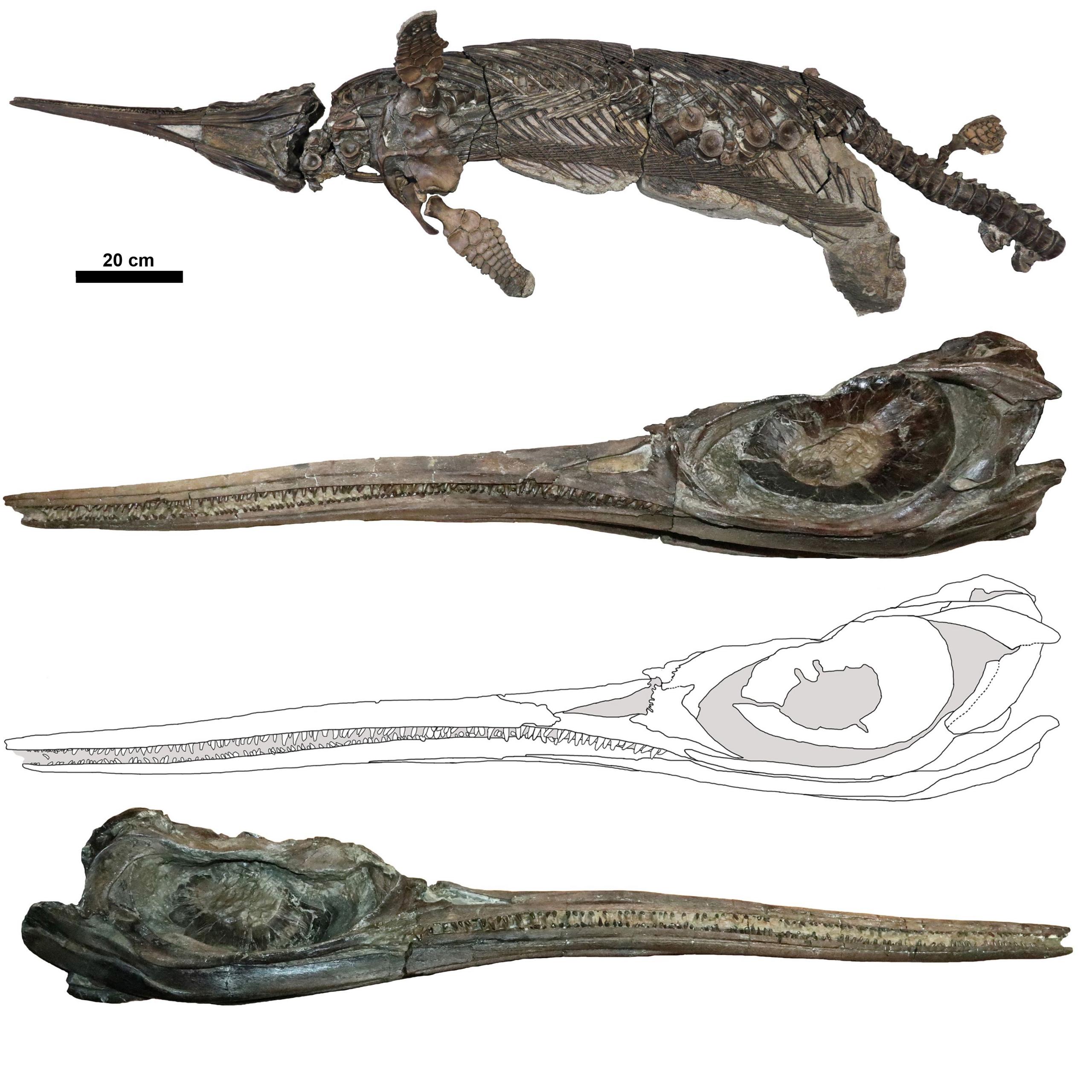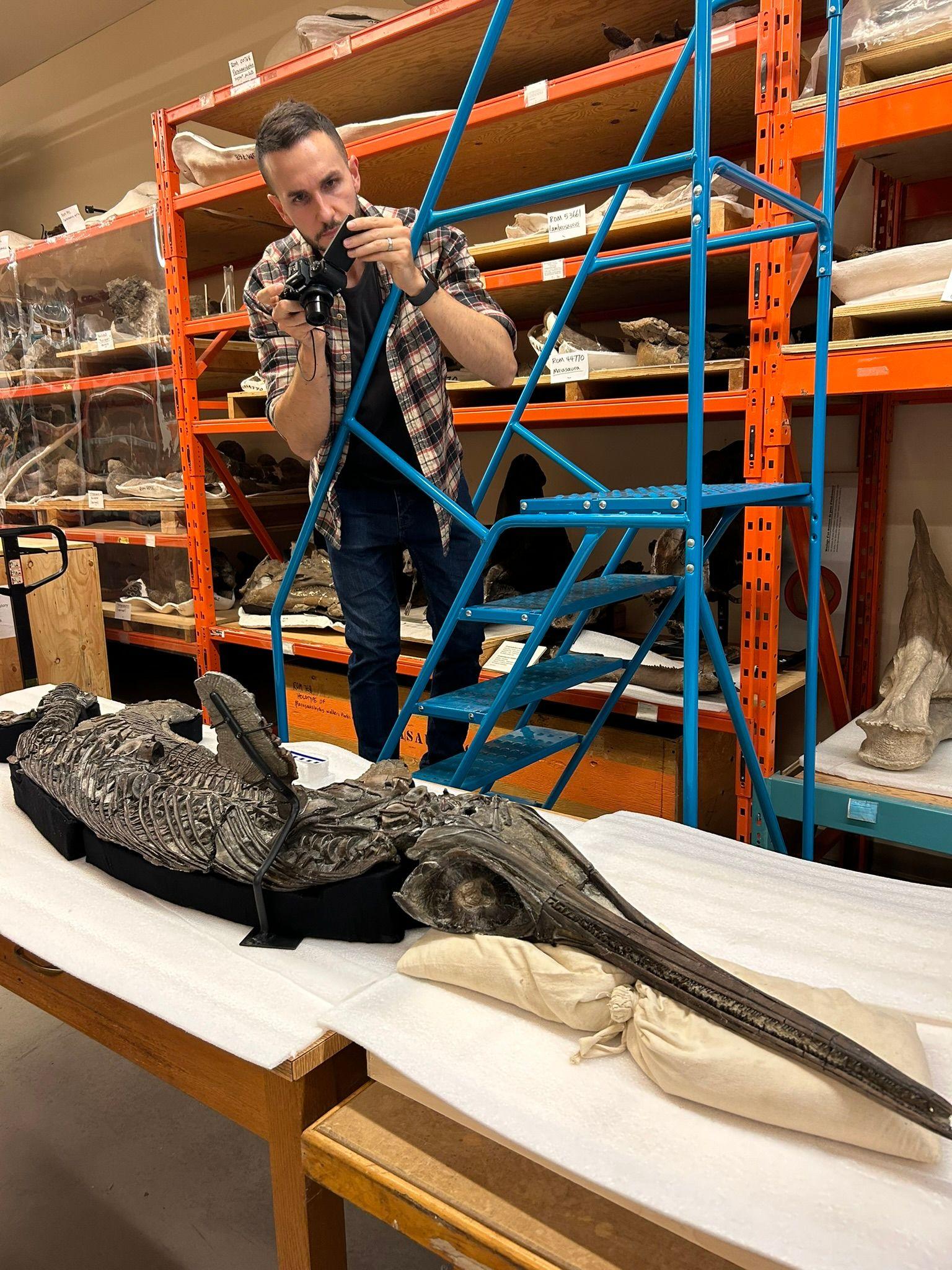Ancient 'dragon' skeleton found on UK coast

Meet the Sword Dragon of Dorset, and the two scientists that studied it
- Published
When you think of dragons, you may imagine fire-breathing creatures flying around in stories.
But there are some 'dragons' in real life, too - they may not be winged or fire-breathing, but the word is used to describe reptiles such as the Komodo dragon, found in Indonesia.
And now, a scientist has found an almost complete skeleton of one that used to live right here in the UK.

The ancient dragon has an incredibly long, toothy snout
Fascinating fossil finds
Dome-headed dinosaur fossil is oldest of its type ever discovered
- Published18 September
Seven-year-old finds Jurassic fossils in his garden
- Published27 April
The newly discovered skeleton is a rare type of ichthyosaur, which is a prehistoric reptile that lived in the ocean.
This one's called Xiphodracon goldencapensis, or the Sword Dragon of Dorset, after the county where it was found.
It's the only known fossil of the dinosaur ever found, and will help scientists learn lots more about these ancient lizards.

It wasn't studied for a while after it was found
It was found in 2001, in Dorset, by a fossil collector called Chris Moore.
The skeleton includes a skull with enormous eye sockets and a long sword-like snout.
Scientists studying it say the animal would have been about three metres long and would have dined on fish and squid.
They even think there may be traces of its last meal preserved in the fossil!

Dr Lomax had no ideas how important the fossil would be when he first started researching it
Since its discovery, the fossil has been studied by three scientists around the world.
Now the experts have published their findings in a journal called Papers in Palaeontology.
The research was led by ichthyosaur expert Dr Dean Lomax who said when he first saw the skeleton in 2016 he thought it was "unusual", but at that time had no idea how important it was.
This is because ichthyosaurs from the same time period (around 193–184 million years ago) are extremely rare, and so very little is known about their lives then.
Co-author Dr Erin Maxwell explained: "This skeleton provides critical information for understanding ichthyosaur evolution, but also contributes to our understanding of what life must have been like in the Jurassic seas of Britain."

Dr Lomax first started working with the fossil almost ten years ago
That wasn't the only exciting element of the discovery Dr Lomax said: "One of the coolest things about identifying a new species is that you get to name it!
"We opted for Xiphodracon because of the long, sword-like snout (xipho from Greek xiphos for sword) and dracon (Greek and Latin for dragon) in reference to ichthyosaurs being referred to as "sea dragons" for over 200 years."
The skeleton is planned to go on display at the Royal Ontario Museum, Toronto, Canada.
